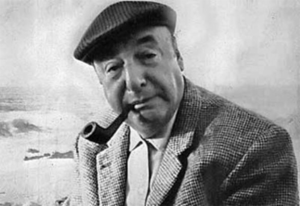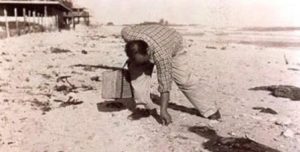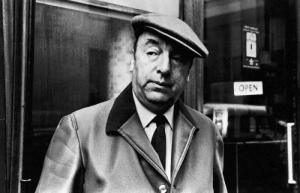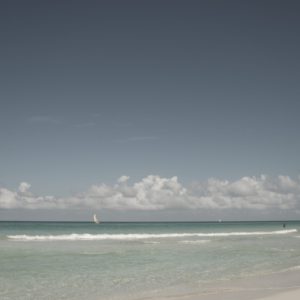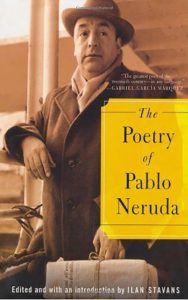PABLO NERUDA EN LOS RECUERDOS DE SUS VISITAS A CUBA.
Ricardo Eliécer Neftalí Reyes Basoalto, el verdadero nombre del Premio Nobel de Literatura, nació en Parral, región del Maule, Chile el 12 de julio de 1904, y falleció 12 días después del golpe de Estado de Pinochet en septiembre de 1973.
Aun está latente en nuestros recuerdos aquella visita que nos hizo a la isla en los años en que su poesía transendia los contornos de lo distinguido de las letras latinoamericanas.
En otras oportunidades nos visitó cuando comenzaba en Cuba el proceso revolucionario en Cuba, proceso que cambió por completo enteras generaciones de un país que había atravesado periodos llenos de imperfecciones y también positivismo como república y que la convirtieron desde entonces en la amarga realidad que hoy sufre el pais y todos los habitantes de la isla de José Martí.
RECUERDOS..
En su crónica Recuerdos de La Habana (diario Hoy, La Habana, julio 1950) Pablo Neruda recordó su estancia en la playa de
Varadero la cual había visitado en 1942, en donde quedó estupefacto “por sus aguas marinas, únicas que parcelaron la turquesa oceánica y se dividieron en el más compacto fulgor de la mariposa azul.
El escritor, junto a su esposa Delia del Carril, llegaba por primera vez a la isla donde cumplirían un programa de conferencias en La Habana, en las que participaron importantes figuras de la cultura cubana, en la Academia Nacional de Artes y Letras, en el recodo conformado por las calles Acosta y Compostela en La Habana Vieja.
Neruda sostenía vínculos con los intelectuales de izquierda, con escritores, poetas y pintores comprometidos socialmente y de corte antifascista en Cuba.
De ese encuentro, que el poeta definió tan apasionadamente, se habla de la visita llegada de la mano de su amigo el naturalista matancero Carlos de la Torre, (15 de mayo 1858-19 febrero 1950) uno de los malacólogos más importantes de Cuba quien fue presentado al autor de 20 poemas de amor y una canción desesperada por el escritor Juan Marinello.
Posteriormente, ya fallecido de la Torre, recordaría Neruda algunas de sus conversaciones en las que el científico le dijera “Los caracoles de tu patria se parecen a tu poesía, en la forma y en el color oscuro”.
Ambos compartían en común un profundo amor por la Naturaleza. Se habla del científico devenido poeta quien descansaba en éstas sus fatigas investigativas; mientras que al poeta lo apasionaba el estudio y la colección de caracoles.
En una visita que le hiciera Neruda al científico en su residencia, éste le obsequiara con una caja llena de magníficos ejemplares de caracoles de su colección, entre los que no faltaron las endémicas polymitas moluscos circunscriptos a la occidental región cubana de Viñales.
“Desde entonces, y al azar de mis viajes, recorrí los siete mares, acechándolos y buscándolos (…)” constituye una de sus revelaciones, escrita desde el refugio marinero de Isla Negra —la última morada del poeta—, puede leerse en su obra Confieso que he vivido, editada póstumamente.
Pareciera como si el amor nacido en las blancas arenas de Varadero se inscribió en lo más recóndito del poeta quien reconoció: “en realidad, lo mejor que coleccioné en mi vida fueron mis caracoles”.
“Estos me dieron el placer de su prodigiosa estructura: la pureza lunar de una porcelana misteriosa, agregada a la multiplicidad de formas, táctiles, góticas, funcionales”, dejó escrito en sus memorias.
Ocho años después el Bardo retomó el paisaje del balneario matancero en su poema “Varadero de Cuba” en el cual plasmó: «Fulgor de Varadero desde la costa eléctrica cuando, despedazándose, recibe en la cadera la Antilla, el mayor golpe de luciérnaga y agua, el sinfín fulgurario del fósforo y la luna, el intenso cadáver de la turquesa muerta: y el pescador oscuro saca de los metales una cola erizada de violetas marinas».
De entre tantos recuerdos, sin dudas, quedaron apresados los disímiles caracoles que poblaban las finas arenas de la playa que hemos bautizado como la más linda del mundo.
PABLO NERUDA IN THE MEMORIES OF HIS VISITS TO CUBA.
Ricardo Eliécer Neftalí Reyes Basoalto, the true name of the Nobel Prize for Literature, was born in Parral, in the region of Maule, Chile on July 12, 1904, and died 12 days after Pinochet’s coup d’état in September 1973.
It is still latent in our memories that visit that made to the island in the years in which his poetry transcended the famous contours of the distinguished Latin American letters.
On other occasions he visited us when the revolutionary process in Cuba began in Cuba, a process that completely changed entire generations of a country that had gone through periods full of imperfections and also positivism as a republic and which turned it since then into the bitter reality that today suffers The country and all the inhabitants of the island of José Martí.
MEMORIES..
In his chronicle Recuerdos de La Habana (newspaper Hoy, La Habana, July 1950) Pablo Neruda recalled his stay on the beach of
Varadero which he had visited in 1942, where he was astounded “by its unique marine waters that divided the turquoise ocean and divided into the most compact glare of the blue butterfly.
The writer, along with his wife Delia del Carril, arrived for the first time on the island where they would hold a conference program in Havana, in which important figures of Cuban culture participated in the National Academy of Arts and Letters in A corner formed by Acosta and Compostela streets in Old Havana.
Neruda maintained ties with left-wing intellectuals, with writers, poets and painters socially committed and anti-fascist in Cuba.
From that meeting, which the poet defined so passionately, we talk about the visit coming from the hand of his friend the naturalist matancero Carlos de la Torre, (May 15 1858-19 February 1950) one of the most important malacologists in Cuba who Was presented to the author of 20 love poems and a desperate song by the writer Juan Marinello.
Later, already deceased of the Tower, Neruda would remember some of his conversations in which the scientist said to him “The snails of your country resemble your poetry, in the form and the dark color”.
Both shared in common a deep love for Nature. One speaks of the scientist who became a poet who rested in these his investigative fatigues; While the poet was fascinated by the study and the collection of snails.
During a visit to Neruda by the scientist at his residence, the latter presented him with a box filled with magnificent specimens of snails from his collection, among them the endemic polymitas molluscs circumscribed to the western Cuban region of Viñales.
“Since then, and at the risk of my travels, I have crossed the seven seas, stalking them and looking for them …” is one of his revelations, written from the seafaring refuge of Isla Negra, the last dwelling of the poet. His work I confess that I have lived, edited posthumously.
It seems as if the love born in the white sands of Varadero was inscribed in the poet’s most secret, who recognized: “Actually, the best thing I collected in my life were my snails.”
“These gave me the pleasure of its prodigious structure: the lunar purity of a mysterious porcelain, added to the multiplicity of forms, tactile, gothic, functional,” he wrote in his memoirs.
Eight years later, the Bardo returned to the landscape of the bathing resort in his poem “Varadero de Cuba” in which he wrote: “Varadero glow from the electric coast when, torn apart, receives in the hip Antilla, the greatest blow of firefly and water , The fulgurario of the phosphorus and the moon, the intense corpse of the dead turquoise: and the dark fisherman takes from the metals a tail bristling with marine violets ».
Among so many memories, undoubtedly, were trapped the dissimilar snails that populated the fine sands of the beach that we have baptized as the most beautiful in the world.
Agencies/Rad.Habana/Excepts/Guadalupe Yaujar/ Internet Photos/ Arnoldo Varona/ TheCubanHistory.com
THE CUBAN HISTORY, HOLLYWOOD.



 PABLO NERUDA in the memories of his Visits to Cuba. (Photos) + PABLO NERUDA en los recuerdos de sus visitas a Cuba. (Fotos).
PABLO NERUDA in the memories of his Visits to Cuba. (Photos) + PABLO NERUDA en los recuerdos de sus visitas a Cuba. (Fotos).